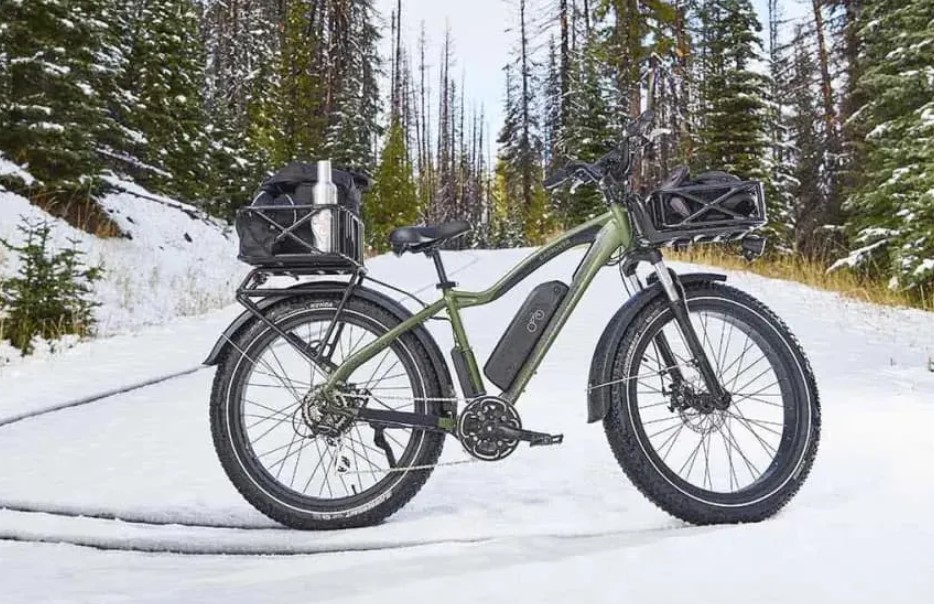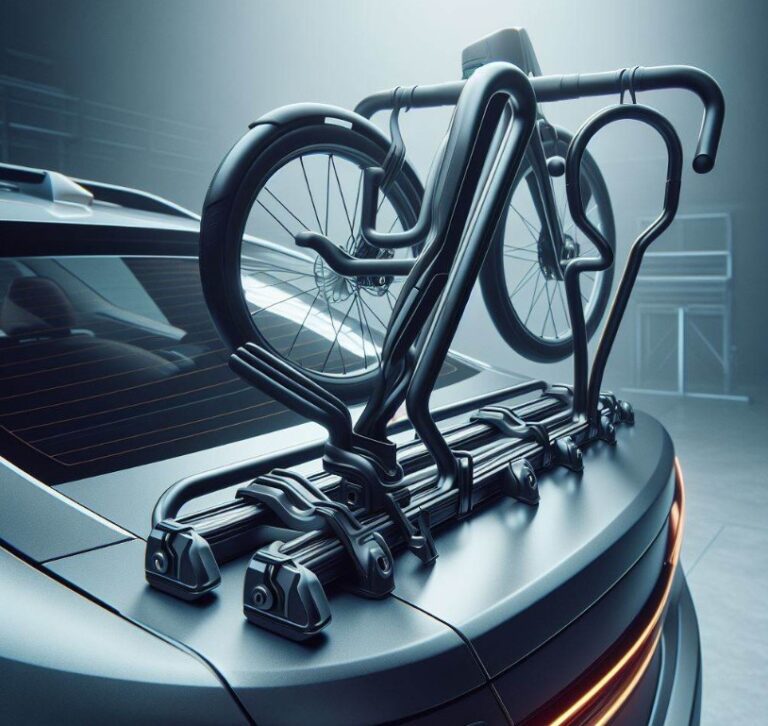How To Store E Bike For Winter? Quick Shortcuts
As winter approaches, How To Store E Bike For Winter? becomes a crucial question for every e-bike owner. The right storage techniques ensure your electric bike remains in top condition, ready for spring adventures.
It’s not just about finding a spot in your garage; it involves meticulous care to maintain the bike’s components, especially the battery. In this article, we delve into effective methods to store your e-bike, ensuring it weathers the winter unscathed and is ready to roll when warmer days return.
Key Takeaways
- Properly cleaning and drying the e-bike before storage.
- Removing and storing the battery separately in a cool, dry place.
- Using a bike cover for additional protection.
- Elevating the bike to avoid tire damage.
- Regularly checking the bike’s condition during storage.
How To Store E Bike For Winter?
Storing an e-bike during winter requires careful attention to detail. Firstly, clean your bike thoroughly, ensuring no dirt or moisture is left that could cause rust or corrosion.
Focus on the chain and gears, as these areas are prone to damage. Next, remove the battery, the heart of your e-bike, and store it separately in a temperature-controlled environment. This step is vital as extreme cold can significantly impact battery health.

Battery Care
Charging and Storage
The e-bike’s battery demands special attention. Charge it to about 40-70% before storage, as this range is optimal for lithium-ion batteries. Store the battery in a cool, dry place, away from direct sunlight and extreme temperatures. Avoid storing it fully charged or completely discharged, as both can harm its lifespan.
Temperature Considerations
Temperature plays a crucial role in battery preservation. Ideal storage conditions are between 50°F and 68°F (10°C and 20°C). Extreme cold can reduce the battery’s efficiency and lifespan, making it crucial to avoid leaving it in an unheated garage or shed.
Mechanical Maintenance
Chain and Gears
The chain and gears of your e-bike should be cleaned and lubricated before storage. This prevents rust and ensures smooth operation when you’re ready to ride again. Use a quality bike lubricant and avoid over-application, as this can attract dirt.
Tire Care
Inflation and Storage
Keep the tires inflated to the recommended pressure to avoid flat spots. Consider elevating your e-bike or using a bike stand. This reduces pressure on the tires and prevents long-term damage.
Regular Inspection
Even in storage, tires can slowly lose air. Check them periodically and maintain proper inflation. This simple step can significantly extend the life of your e-bike’s tires.
Storage Location
Selecting the right storage location is critical. Your e-bike should be kept in a dry, cool place, away from moisture and extreme temperatures. A garage or shed is ideal, but ensure it’s secure and protected from the elements.

Indoor vs. Outdoor Storage
Indoor storage is preferable, as it offers better protection from weather and temperature fluctuations. If outdoor storage is your only option, use a high-quality, waterproof bike cover to shield your e-bike from moisture and dust.
Additional Protective Measures
Bike Covers
A bike cover provides an extra layer of protection, especially if you’re storing your e-bike outdoors. It keeps dust, moisture, and pests at bay, preserving the bike’s components.
Regular Checks
Throughout the winter, periodically inspect your e-bike. Check for any signs of rust, tire pressure loss, or battery issues. These regular checks can prevent minor issues from becoming major problems.
How Should I Store My E-Bike Battery For The Winter?
Storing your e-bike battery correctly during winter is crucial for maintaining its longevity and performance. The ideal storage method involves several key steps:

- Charge Level: Before storage, charge your battery to around 40-70%. This is the sweet spot for lithium-ion batteries, helping to maintain their health over long periods of inactivity.
- Temperature: Store the battery in a cool, dry place, avoiding any areas that are prone to extreme temperature fluctuations. The optimal temperature range is between 10°C and 20°C (50°F and 68°F).
- Physical Storage: Keep the battery in a clean, dry space, preferably inside your house. Avoid damp or unheated locations like garages or sheds, as moisture and cold temperatures can degrade the battery.
- Maintenance Checks: Periodically check the battery’s charge level every few months and top it up if it falls below 40%.
By following these guidelines, you ensure that your e-bike battery remains in good condition throughout the winter.
Should I Remove My Ebike Battery When Not In Use?
Removing the e-bike battery when it’s not in use, especially during extended periods like winter storage, is highly recommended. Here’s why:

- Battery Health: Prolonged attachment to the bike, especially in fluctuating temperatures, can lead to gradual battery discharge and potential long-term damage.
- Safety: Detaching the battery reduces risks associated with over-discharge, short-circuiting, or potential damage from environmental factors.
- Temperature Control: When removed, you can store the battery in an environment with a more controlled temperature, which is essential for battery health.
- Ease of Maintenance: A detached battery is easier to inspect and maintain. It allows for more convenient charging and monitoring during the off-season.
In summary, removing and properly storing the battery not only prolongs its lifespan but also ensures your e-bike is ready to use when needed.
How Cold Is Too Cold For An E-Bike Battery?
The performance of e-bike batteries can be significantly affected by cold temperatures. Here’s what you need to know:
- Temperature Threshold: Lithium-ion batteries, commonly used in e-bikes, start to lose efficiency below 0°C (32°F). The colder it gets, the more their performance is impacted.
- Chemical Reactions: Cold temperatures slow down the chemical reactions within the battery, leading to reduced capacity and power output.
- Long-term Exposure: Prolonged exposure to freezing temperatures can cause irreversible damage to the battery cells.
- Optimal Use: For optimal performance, it’s best to use and store e-bike batteries in temperatures above 0°C (32°F) and ideally in the 10°C to 20°C (50°F to 68°F) range.
In cold climates, it’s important to minimize the battery’s exposure to freezing temperatures, especially during storage and charging.
Conclusion
Properly storing your e-bike during winter is essential for maintaining its performance and longevity. By focusing on battery care, mechanical maintenance, choosing the right storage location, and taking additional protective measures, you can ensure your e-bike is well-preserved through winter. Come spring, you’ll be ready to hit the road with a bike that’s as good as new.
Frequently Asked Questions
How can I ensure my e-bike’s safety during winter storage?
Store your e-bike in a secure, locked place like a garage or shed. If you’re using outdoor storage, ensure the bike is covered and locked to a sturdy, immovable object to prevent theft.
What is the best way to lubricate my e-bike chain for winter storage?
Clean the chain thoroughly and apply a quality bike lubricant. Ensure you don’t over-lubricate, as excess lubricant can attract dirt. This helps in preventing rust and maintaining a smooth operation.
How should I care for my e-bike tires during winter storage?
Keep the tires inflated to the recommended pressure to avoid flat spots. Consider using a bike stand to elevate the e-bike, reducing pressure on the tires. Regularly check the tire pressure throughout the winter.
Can I store my e-bike outdoors if I use a cover?
While not ideal, if you must store your e-bike outdoors, using a high-quality, waterproof bike cover is crucial. It will protect your bike from moisture, dust, and the elements. However, remember to store the battery indoors.

Welcome to the exhilarating world of Matt Rex, a professional car racer turned renowned vehicle enthusiast. Immerse yourself in his captivating blog as he shares heart-pounding adventures, expert reviews, and valuable insights on cars, trucks, jets, and more. Fuel your passion for speed and discover the beauty of vehicles through Matt’s engaging stories and meticulous expertise. Join the ever-growing community of enthusiasts who find inspiration and expert advice in Matt Rex’s blog—a digital hub where the thrill of speed meets the pursuit of knowledge.







